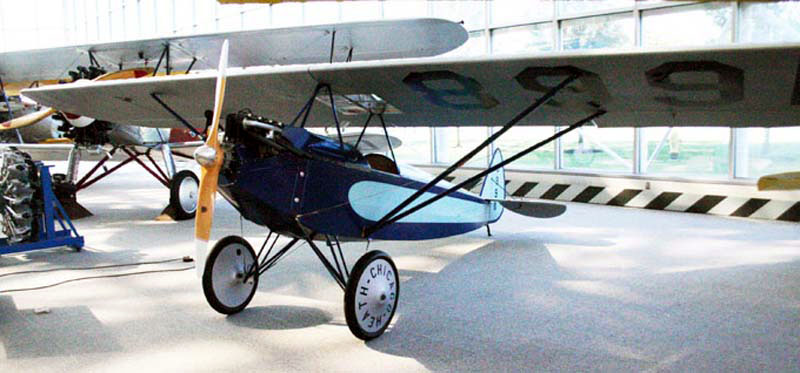| Heath | ||||||||||||||||||||
|
Parasol Model V |
||||||||||||||||||||
 |
||||||||||||||||||||
|
Photo: Robert Deering 9/3/2011 Museum of Flight King County International Airport (BFI) Seattle, Washington |
||||||||||||||||||||
|
The Museum’s Heath Parasol was constructed from a kit designed by Edward Heath in 1926. Heath, son of a machinist, received all his engineering training by trail and error in his family’s machine shop where he constructed his first aircraft. Dealing mostly in aircraft parts, he founded the E.B. Heath Aerial Vehicle Company in Chicago in 1913. Passionate about aviation, Heath had big ideas about making the costly hobby of flying affordable to the average American. World War I briefly derailed his attempts at marketing an inexpensive, light plane to Americans and he worked for several years dealing surplus government and military planes and engines. After renaming his company the Health Airplane Company, Heath returned to his idea of the affordable plane in 1925, with designer Claire Linstead. The two produced the Tomboy in 1925, in which Heath competed and won the light planes events at the National Air Races in Philadelphia in 1926. Using his winnings from National Air Races, Heath and Linstead produced the Parasol: a single seat, high-wing monoplane with a 27-horsepower Henderson motorcycle engine. Heath quickly discovered that the Parasol was an affordable, reliable light plane that he could market to the average American. He began selling the Parasol in a variety of forms: fully constructed and operational, fully constructed minus the engine, disassembled in kits (kits were divided into 11 groups—each purchased separately) and just basic blueprints of aircraft that customers could use to build a Parasol from scratch. Heath achieved his goal: Parasols quickly became popular and he sold nearly 1,000 kits and at least 50 fully assembled aircraft. Tragically, he was killed in 1931 piloting a new low-wing test model Parasol. He is remembered as a pioneer in homebuilt aircraft and was the first American to successfully market and sell the homebuilt airplane kit. |
||||||||||||||||||||
|
||||||||||||||||||||